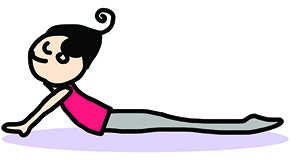
Preventive health is sometimes an underexposed aspect of the healthcare system. Any program or intervention that can improve your current physical and emotional health will in the long run decrease the possibility of incurring an injury or illness. Many aspects of today’s society are detrimental to our physical health. We live in communities where travel occurs by automobile, rather than on foot or by bicycle. We spend increasing hours at sedentary jobs operating computers or automated equipment. Our food is increasingly processed and preserved.
Overall, this leaves Australian residents in poorer physical health. As well, our children are demonstrating shocking trends toward increasing levels of obesity and time spent at television and computer screens, rather than participating in healthy levels of physical activity. As a result, diseases of lifestyle such as diabetes, cardiovascular disease and hypertension are also on the increase.
However, the solutions to these problems are within our grasp.
Most people think of visiting the chiropractor after they have hurt themselves. What they do not realise is how important it can be to see the chiropractor before an injury can occur. A body that is in proper alignment can protect itself from injury far more easily than one that is not aligned.
Not everyone needs the same kind of preventative visits. Some people are very physically active, and may require more visits than those who are only mildly active. Your chiropractor is the person to talk to about how often you need to be seen to receive preventive care.
When your body is working at its peak performance, it can better protect itself from injury, as well as having an increased capacity to heal itself. Anything that interferes with this performance, whether it is chronic stress or a traumatic injury, keeps the body from working at its best. Spinal adjustments and physical therapy helps your body stay at its best and enable your body to draw on its own natural healing abilities.
The key to preventative health care and developing long-term solutions giving patients’ the knowledge they need to be aware of the causes of problems, and to manage their own health. This can include:
- Fitness testing and exercise program design
- Weight/diabetes management programs
- Sport specific conditioning
- Injury prevention
- Spinal alignment assessment
- Identifying the causative factors, such as overuse or workplace ergonomics
- Advising on exercise programs both for rehabilitation and prevention
- Teaching more efficient body usage in actions at home or at work
- Teaching relaxation techniques to reduce stress
- Working in conjunction with other practitioners where necessary
- General lifestyle advice
Injuries can still happen if you receive preventive care, but the way your body’s reaction to the injury will be different. It may not be as severe an injury – the way it could have been if you were not taking steps to maintain your physical health.
Chiropractic care is one of the things you can do for yourself to ensure you are as healthy and as active for as long as you can be.
Stretch of the Month
Modified Cobra Stretch

- Lie facedown on the floor with thumbs directly under shoulders, legs extended with the tops of your feet on the floor.
- Tighten your pelvic floor, and tuck hips downward as you squeeze your glutes.
- Press shoulders down and away from ears.
- Push through your thumbs and index fingers as you raise your chest toward the wall in front of you. Relax and repeat.
- Do 5 reps total.
Towards Wellness
Move in the right circles

People change and friends grow; don’t let it get you down. Keep hold of those friendships that bring out the best version of you. Try to surround yourself with colleagues & friends who have a positive outlook on life and who approach the daily grind with a champion attitude.

